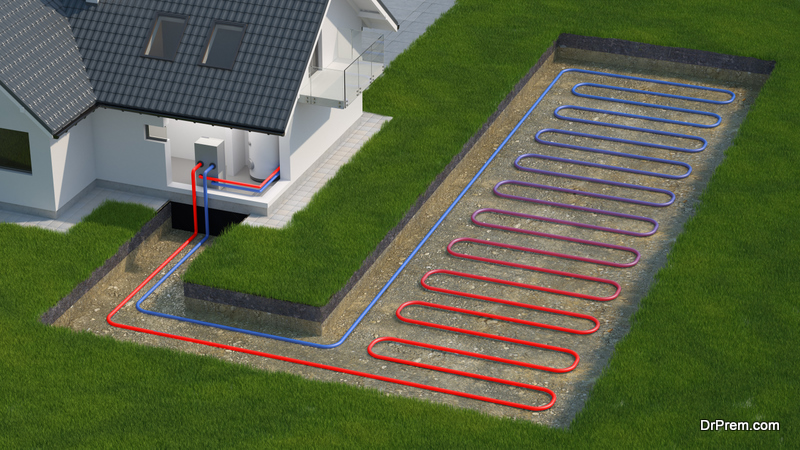Domestic geothermal heat systems can be a cost-effective way to heat a home, as they can replace a furnace. At depths of 6 to 10 meters, the earth’s temperature is no longer impacted by variations in surface temperature and remains generally constant at roughly 8 to 10 degrees Celsius.
The core premise of geothermal temperature regulating is to use the relatively steady internal earth temperature for balancing the widely varying surface temperatures. Geothermal temperature regulation employs heat pumps to capture heat energy and transport it into buildings, saving up to two thirds on cooling as well as heating.
In the summer, geothermal cooling works similarly to regular air conditioning, except that the heat is stored deep in the ground rather than being vented into the atmosphere. The outcome is guilt-free air conditioning because the heat collected in the summer is used to warm the earth deep below, increasing the efficiency of the ground source heat pump in the winter.
Are Geothermal Heat Pumps Worth the Money?
Geothermal heat pumps are extremely energy-efficient, providing clean, silent heating and cooling while saving up to 70% on electricity expenses. With this technology, everyone might be in control of their lifelong energy supply.
Types of Geothermal Heat Pump Systems
Ground loop systems are divided into four categories. Three of these are closed-loop systems: horizontal, vertical, and pond/lake. The open-loop system is the fourth type of system. Climate, soil conditions, available acreage, and local installation prices all play a role in determining which is ideal for the job. All of these methods can be employed in both residential and commercial construction.
Geothermal heating and cooling cost
While the cost of electricity, oil, or natural gas changes, the cost of running a geothermal system is relatively constant. A geothermal system’s electricity prices are low and rarely fluctuate from month to month.
Despite their many benefits, a traditional geothermal system for a typical home used to cost $50,000 or more to install.
Geothermal has Real Benefits
1. Economical
Other systems have far higher operational expenses. When compared to traditional heating and cooling systems, a geothermal heat pump will save you 30 to 60 percent on heating and 20 to 50 percent on cooling.
2. Environmental friendly
Clean, renewable energy is used (the sun). There is no onsite combustion with a geothermal heat pump, therefore no carbon dioxide, carbon monoxide, or other greenhouse gases are released. There are no difficulties with combustion-related safety or the air quality within the house, either. (The pump unit does require electricity, which might come from fossil sources.)
3. No noise
There is no fan or compressor outside which means you will not have to hear any extra noise while using this system.
4. Long-lasting and low-maintenance
The indoor components typically last 25 years (compared to 15 years or less for a furnace or traditional AC unit) and the ground loop is more than 50 years. Because the system has fewer moving parts and is protected from the weather, it requires little maintenance.
Article Submitted By Community Writer


